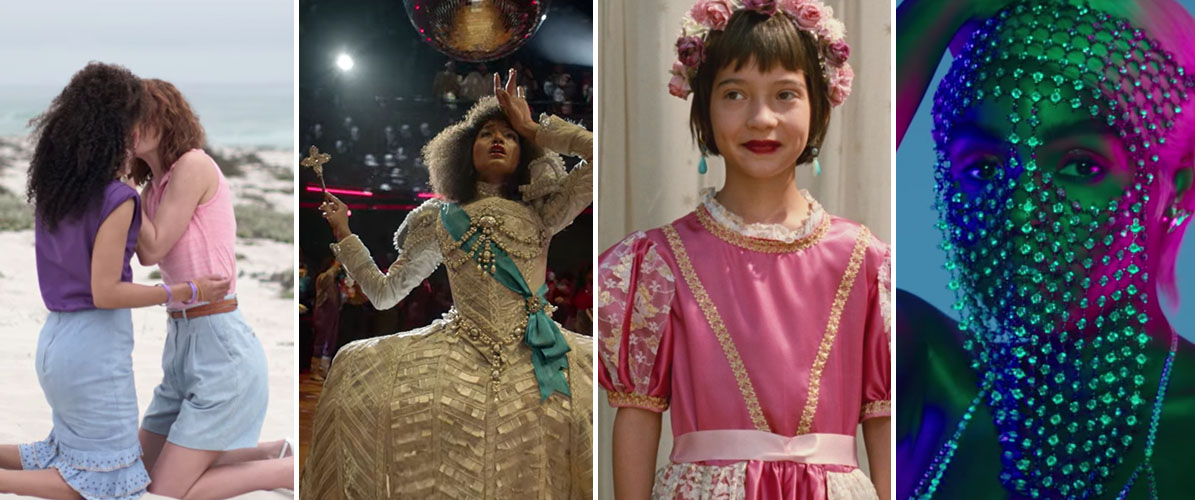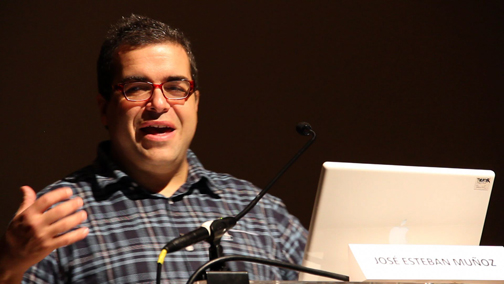
Unit Overview: Queer Utopias
Welcome to Unit 4: Queer Utopias! In the first three units of this course, genre and form organized our study. In this final unit, rather than examining a genre, students will examine a few theoretical concepts – queerness, utopia, and futurity – across film, television, and music video. Students will examine “San Junipero” from Netflix’s series, Black Mirror, Episode 1 of the FX series, Pose,, the film Ma Vie En Rose, and Janelle Monáe’s “emotion picture,” Dirty Computer. This unit is primarily grounded in excerpts from Jose Esteban Muñoz’s book, Cruising Utopia: The Then and There of Queer Futurity. Students will begin this unit by reading the first page of Cruising Utopia. On page 1, Muñoz writes:
“The future is queerness’ domain. Queerness is a structuring and educated mode of desiring that allows us to see and feel beyond the quagmire of the present. The here and now is a prison house. We must strive, in the face of the here and now’s totalizing rendering of reality, to think and feel a then and there. Some will say that all we have are the pleasures of this moment, but we must never settle for that minimal transport; we must dream and enact new and better pleasures, other ways of being in the world, and ultimately new worlds.”
In this unit, students will ask:
- Why, according to Muñoz (and perhaps many of the filmmakers in this unit) is the “here and now” a “prison house” for LGBTQ people?
- How do LGBTQ people use the past and the future to create “other ways of being in the world” and “ultimately new worlds?”
- How do works of film, television, and music video convey that world-making?
- How does the framework of queer futurity intersect with Afrofuturism?
“San Junipero” in Black Mirror
Students will use the writings of Jose Esteban Muñoz and Jack Halberstam to examine how “San Junipero” addresses queer temporality, “queer time vs. straight time,” and queer futurity and utopia. Readings to accompany “San Junipero” include:
- Day 1: Jose Esteban Muñoz, Cruising Utopia: The Then and There of Queer Futurity. (Introduction)
- Day 2: Jack Halberstam, In A Queer Time and Place: Transgender Bodies, Subcultural Lives. (Introduction)
- Day 3: Jose Esteban Muñoz, Cruising Utopia: The Then and There of Queer Futurity. (Chapter 1)
Pose
Students will review Chapter 1 of Cruising Utopia as they close-read the opening scene of Episode 1 of Pose. Then, students will examine Marlon M. Bailey’s analysis of HIV/AIDS prevention in the ballroom scene and examine how Pose addresses core components of ballroom culture. Students will examine Muñoz’s work on stages and performance to examine how Pose “stages” utopia. Readings to accompany Pose include:
- Day 1: Jose Esteban Muñoz, Cruising Utopia: The Then and There of Queer Futurity. (Review Chapter 1)
- Day 2: Marlon M. Bailey, “Performance as Intravention: Ballroom Culture and the Politics of HIV/AIDS Prevention in Detroit”
- Day 3: Jose Esteban Muñoz, Cruising Utopia: The Then and There of Queer Futurity. (Chapter 6)
Ma Vie En Rose
Students will close-read a scene from the film alongside a brief reading from Cruising Utopia that examines performances of “queer failure.” Then, students will examine Julia Serano’s essay on trans-misogyny, examining how trans-misogyny emerges within the film and how the utopia of “Pam’s World” functions as a response to it. Then, students will analyze the film’s resistance to traditional narrative and analyze the film’s ambiguous resolution.
- Day 1: Jose Esteban Muñoz, Cruising Utopia: The Then and There of Queer Futurity. (Selection from Chapter 10)
- Day 2: Julia Serano, Whipping Girl: A Transsexual Woman on Sexism and the Scapegoating of Femininity. Seal Press, 2007. (Excerpt: Trans Woman Manifesto)
- Day 3: Michael R. Schiavi. “A ‘Girlboy’s Own Story: Non-Masculine Narrativity in Ma Vie En Rose.”
Dirty Computer
Students will read a collection of brief essays on Dirty Computer to examine how the formal techniques of Monáe’s “emotion picture” convey her messages, and students will use two brief videos and an article on Afrofuturism to examine how Afrofuturist imagery and ideology operates within Dirty Computer. Readings to accompany Dirty Computer include:
- Day 2: Carol Vernallis, Gabriel Zane Ellis, et. al. “Janelle Monáe’s Dirty Computer Music Video/Film: A Collective Reading”
- Day 3: Mary Dery, “Black to The Future: Interviews with Samuel R. Delany, Greg Tate and Tricia Rose” in Flame Wars: The Discourse of Cyberculture.
Unit Response Essay
As always, feel free to edit or replace this prompt with one that would best fit your course. Here is a suggested prompt.
Compare and contrast one of the four media texts we examined in this unit with another, somewhat similar media text. How do these works compare in terms of the way they address their subject matter? How are the works similar or different? Some of the works listed below, such as Tomboy, share subject matter similarities with the content we’ve examined, but not through a utopian framework. Some, such as Lemonade and Black is King, share Afrofuturist frameworks, but are not explicitly “queer.” How do these stagings and performances compare to the texts we encountered? Choose at least one of the secondary readings we encountered in this unit to support your analysis.
Possible media texts for comparison include: For “San Junipero”:
For Pose:
- Kiki (2016)
- Paris is Burning (1990)
For Ma Vie En Rose:
- Tomboy (2011)
For Dirty Computer:
- Lemonade (2016)
- Black is King (2020)
